Project Name:
Keep It Alive! Evaluation Study
Funding Dates:
Status:
Completed
Principal Investigators:
Helena Shimeles, Winston Husbands, Clemon George, Haile Fenta, Arsalan Afzal, Shamara Baidoobonso, Tola Mbulaheni
Description:
In Canada, the Federal Initiative to Address HIV/AIDS identified social marketing initiatives as key components to increasing public awareness about HIV/AIDS and encouraging greater access to HIV/AIDS services among those who are part of “hidden populations” The “Keep it Alive!” (KIA) campaign was a community-based HIV/AIDS education and awareness social marketing campaign for ACB communities in Ontario, Canada. The campaign was developed and implemented by the African and Caribbean Council on HIV/AIDS in Ontario (ACCHO) between 2006 and 2009. The KIA evaluation study was implemented in 2009-2010 in order to assess how the KIA campaign was received and understood by ACB communities and to assess community knowledge, attitudes, and behaviours related to HIV.
Purpose and Objectives:
1) Determine the level of exposure to the KIA campaign in ACB communities; 2) examine the correlates of exposure to the KIA campaign; 3) examine the association of the level and type of exposure to the KIA education campaign with individuals’: (a) awareness of HIV/AIDS as an issue for ACB communities; (b) willingness to discuss HIV/AIDS; and (c) HIV testing; 4) assess the perceived importance of education messages received from the KIA campaign; 5) identify individual and community reactions to and assessments of the KIA campaign.
Method:
Survey and focus groups among ACB communities in Toronto, Ottawa and London
Population:
ACB communities in Toronto, Ottawa and London
Region:
Toronto, Ottawa and London
Start and End Date:
2009 - 2010
Results:
Focus group participants in our study, HIV/AIDS prevention campaigns were perceived to be more visible “back home” than they are in Canada. Prevention campaigns that are too subtle may be doing a disservice to African, Caribbean, and Black (ACB) communities who may be more familiar with bolder campaigns. Some focus group participants expressed that HIV did not feel relevant; they needed to be convinced that HIV is a public health concern. As a result, participants often described the need for factual information about the HIV/AIDS epidemic in Canada and its impact on ACB communities to be highlighted in future campaigns. People to whom we spoke had the impression that HIV is not a Canadian issue. It is important then, for ACCHO, its member agencies and partners to address this misconception. Participants also grappled with feelings of discomfort due to the way that many Canadians link HIV with African or Black people. The focus group discussions about how to represent people living with HIV in campaigns centered on the observation that the models in the campaign images did not appear to be ill. Such judgements about the outward appearance of people living with HIV have implications for people’s assumptions about HIV and those who are infected and, ultimately, for prevention efforts. However, more than three-quarters of survey participants acknowledged that how a person looks is not an indicator of that person’s HIV status. Learned that survey participants who demonstrated lower reported HIV-related stigma were more likely to be older, more educated, have tested for HIV in the past, and have found the KIA campaign images appealing. Roughly two-thirds of the survey participants overall indicated that they saw the KIA campaign images, demonstrating the successful impact and reach of the campaign.
Project Indicators and Outcomes:
Funding Sources:
AIDS Bureau of Ontario’s Ministry of Health and Long-Term Care as part of its support for ACCHO and the HIV/AIDS strategy for African and Caribbean communities in Ontario.

